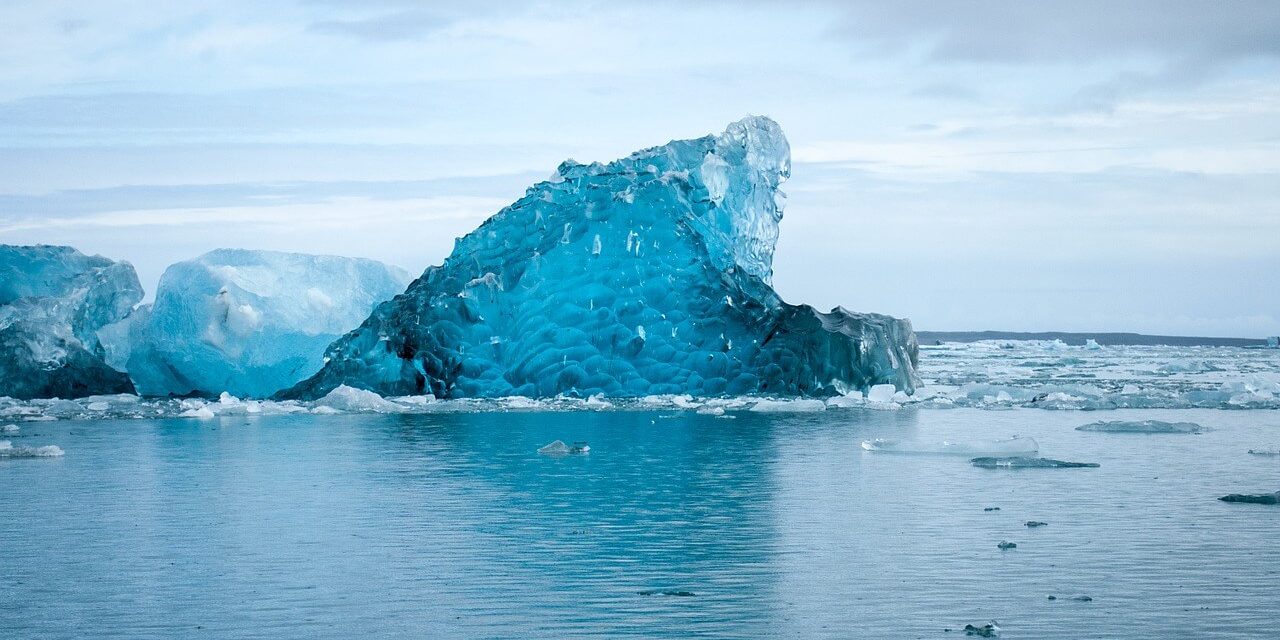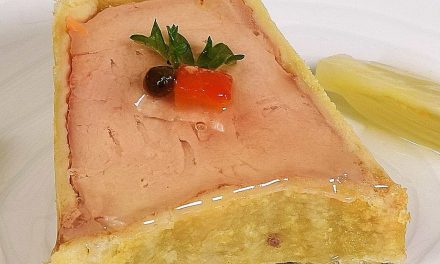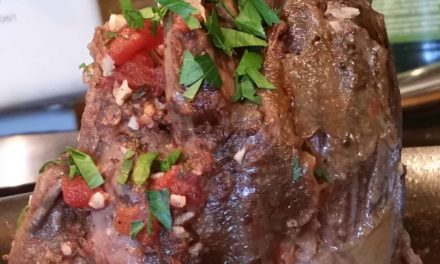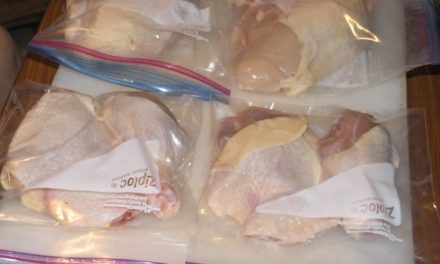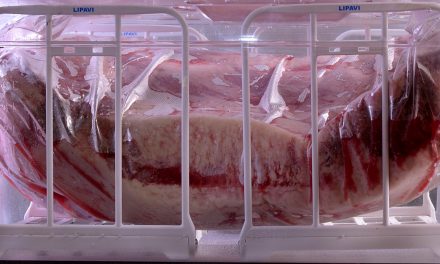Jolt
Everybody values delicious, beautiful, perfectly cooked food. But even for restaurants, flavor and appearance of quality are secondary in importance to FOOD SAFETY. Some people find it “shocking” to discover that no matter how popular your restaurant is, no matter how high the profit margin, no matter how much your family loves you, you will not be popular for long if your food does not meet scientifically established safety requirements.
Unlike most familiar and traditional forms of cooking, sous vide processing can be used to pasteurize/preserve food. Safe cooking requires the avoidance of “the temperature danger zone.” Pathogenic bacteria (the little critters that make us sick, e.coli, Salmonella, etc.) have a number of things in common with humans and all other animals.
They like temperatures between 70 F/4 C and 90 F/32 C for one thing. That’s when they are most active–like people. They can survive temperatures between 40 F/4C and 125 F/53 C, below which they become inactive, and above which they start dying off–like people. Spoilage mechanisms (autolysis) in meat also operate at their fastest rate between these temps–even though there may not be any bacteria present, meat can still spoil. Since pasteurization does not actually sterilize, there may be a FEW target bacteria left in your SV item after processing–just not enough to gain a foothold in your digestive tract. However, exposing them to beneficial temperatures can encourage them to multiply–it’s not really about SV so much as it is about ALL cooked food. That pizza that you left out on the table the night before, the turkey that remains on the counter all afternoon after your Thanksgiving meal, these things are invitations to pathogenic cross contamination and autolysis. Steps must be taken to avoid spending extended periods of time in those temperature danger zones, both on the way up and on the way down.
Do not skim this article–the consequences could be shocking
After your sous vide project has been processed, you have the option of either serving it immediately or saving it for future use. If your intention is to refrigerate it for service later, and assuming that it spent the necessary amount of time to have become pasteurized, it must be cooled to no hotter than 70 F/21 C as quickly as possible. Putting it in the refrigerator or freezer will NOT accomplish this because air is a notoriously bad conductor of thermal energy. In fact, putting food that is warmer than 70 F/21 C in the refrigerator puts the OTHER food in there in jeopardy because of exposure to unsafe temperature. The best way to achieve 70 F/21 C right out of the bath is to plunge your product in at least twice its volume of cold water, preferably with ice. Hence the term “Cold Shocking.” Do not pack it in ice alone–again, this will cool the food too slowly. The bag needs to be in direct contact with water to chill, just as it needed to be in direct contact with water to cook. Once that has been accomplished, refrigerate the package at 40 F/4 C. Why? See below…
Counter Shocking
Tender steaks prepared using sous vide have captured the imagination of enthusiasts. They come out perfect medium rare all the way through. So why would you shock a steak that you plan to eat right away, and medium rare, for that matter? As it turns out, there are different degrees, different levels of shocking.
Now that you have removed your choice rib eye steak from the bath, do you need to shock it? Well, no and yes. Simply put, you don’t want to shock it down to 70 F/21 C if you plan to eat it within the next half hour or so. And if you DO shock it all the way, there’s a good chance it will fade away from medium rare a bit when you rekindle it. BUT, if you “counter shock” the surface down 10F-15F, the time it spends over the coals in your smoker will not further increase the internal temperature that you were so careful to achieve.
This means you remove the bag from the bath and relax. It’s sealed. It can sit on the counter for a few minutes. If it’s going to be more than an hour, just leave it in the bath. Good Lord, if we were as nervous about the other foods that we mistreat as we are about these few moments, what kind of anxiety medications would we need? When you’re ready to serve, season the steak as desired, sear it in a pan, on a griddle, on the bbq, put it on a plate, give it a minute for the juices to recirculate, and serve that bad boy. If it’s a roast and takes longer to “sear,” give it fifteen minutes or so for the color to normalize under the crust. I hope that clarifies this middle ground issue!
Brace Yourself
Okay, where was I? Oh, right! Cold shocking refers to taking steps to reduce the temperature of SV items after they have been processed. Unknown to most, Pasteur realized the importance of this; quick chilling was as much a part of his methodology as the pasteurization itself. If you pasteurize proteins and then just let them cool at room temperature, they will probably not become toxic as a result of pathogenic contamination. But they will still spoil.
So, cold shocking is a safety measure with aesthetic benefits. We’re not talking about minutes here. We are talking about hours. Although there is some latitude in interpretation, the legal standards that are generally enforced forbid food from spending more than four hours in the temp danger zone–again, on the way up and on the way down, combined.
Like I said, if you plan on serving your Sous Vide item immediately, there is no food safety reason for shocking it–but there is an aesthetic one. If you plan on smoking it, for example, you want it to get as much exposure to the smoke flavor as possible without exceeding the original target temperature–so you shock it cold.
If you plan to remove your project from the sous vide bath and save it for later (the most commonly applied practice with the exception of items served rare or medium rare), you should temperature shock that food all the way for safety reasons as well. Here’s how you do it:
But Wait! There’s still MORE!
In conclusion, food safety always comes first. Period. But, like I said, there are aesthetic reasons to shocking sous vide processed items. Once chilled to basic refrigerator temperatures like 40 F/4 C, most foods can then be treated “as raw” to achieve the desired appearance without sacrificing the benefits of SV. This means you can roast, grill, saute, bbq, whatever, just as if the product was fresh out of the bag until you get the desired appearance you are accustomed to, without worrying about whether or not that chicken is still pink on the bone, etc. You’re guests will be amazed at your deft and prompt delivery of perfectly cooked ribs and steaks, wondering how on earth you did that!
Using sous vide to retherm
If you treat your food lovingly on the way up and then on the way down again, you want to make sure you use safe practice when you decide to retherm. I have observed people advocating retherming via sous vide to a lower target temperature than the original target, and this is really not a good idea. The same safety guidelines exist regardless of whether or not the food has been pasteurized if only to avoid autolysis. Sous vide is not necessarily the best application for retherming because time spent in the danger zone is cumulative. Most traditional methods spend LESS time in that danger zone than sous vide does.
So, for me, once I’ve taken that chicken or pork or whatever up the ladder and then gently lowered it down again, I leave it sealed in the bag until the day of service. I crack the bag and saute, roast, bbq, grill, baste, deep fry, boil, whatever (did I forget any?) just like it was never processed in the first place. Just like sous vide never existed.
Some people want to argue that if you’re going to do that, why would you sous vide in the first place? I have engaged in these debates, but, ultimately, I rely on that old truism:

